Introduction To Acupressure
Table of Contents
Chapter 1 – What is Acupressure?
Chapter 2 – The History of Chinese Medicine
Chapter 3 – Acupressure vs Other Healing Techniques
Chapter 4 – Scientific Evidence for Acupressure
Chapter 5 – How to Perform Acupressure
Chapter 6 – Acupressure Points for Specific Ailments
Chapter 7 – Acupressure Training Opportunities
Chapter 8 – Getting Professional Treatment
Chapter 9 – Acupressure Products & Tools
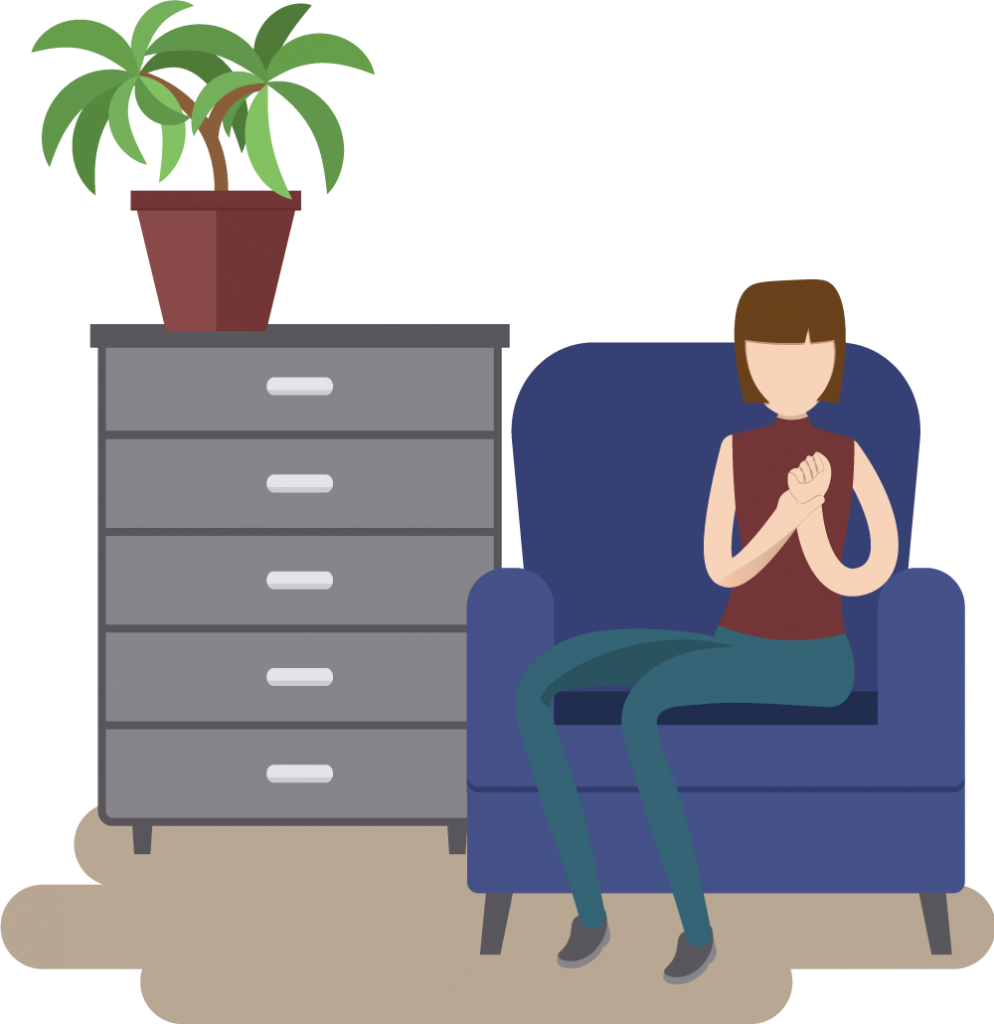
Chapter 1: What is Acupressure?
Acupressure uses hands, fingers, and sometimes other tools to stimulate the acupoints around the body.
Stimulation helps balance the flow of life energy throughout the energy meridians of the body, which empowers it to begin the healing process.
Acupressure in Theory
In traditional Chinese medicine, we learn that there are several energy pathways, called meridians, throughout your body in which your Chi, the energy of life itself, ebbs and flows.
When the flow of energy is disturbed, it results in physical and emotional deterioration over long periods of time that can manifest in your body as chronic illness and mental instability.
An imbalance in the flow of this life energy can be solved via the art of acupressure, the act of stimulating points along the meridians, known as acupoints, with your fingers or other objects.
With proper stimulation, the energy of the meridians can be balanced and your health and emotions restored to normal function.
Acupressure in Practice
In acupuncture, meridian points are “punctured” with needles, while in acupressure you merely use finger “pressure” to stimulate them, thus the respective names of the two healing arts.
Since it doesn’t use potentially dangerous needles, acupressure can be practiced casually at home with no risk.
As you can see from our acupuncture meridian guide, the energy pathways consist of twelve primary meridians, two extra meridians known as the major energy “vessels”, and six smaller energy pathways that flow between the previous fourteen meridian lines.
There are 361 specific acupoints along these meridians which can be used for acupuncture or acupressure, but some practitioners also stimulate extra points on the body that aren’t labelled as points of a specific meridian.
There are a lot of points to learn in acupressure, but thankfully we’ll share some visual guides in the chapters to come that will tell you exactly which acupoints to stimulate to promote the healing of various problems.
All you have to do is follow along with the video and image guides in order to experience the healing power of acupressure in just a few moments.
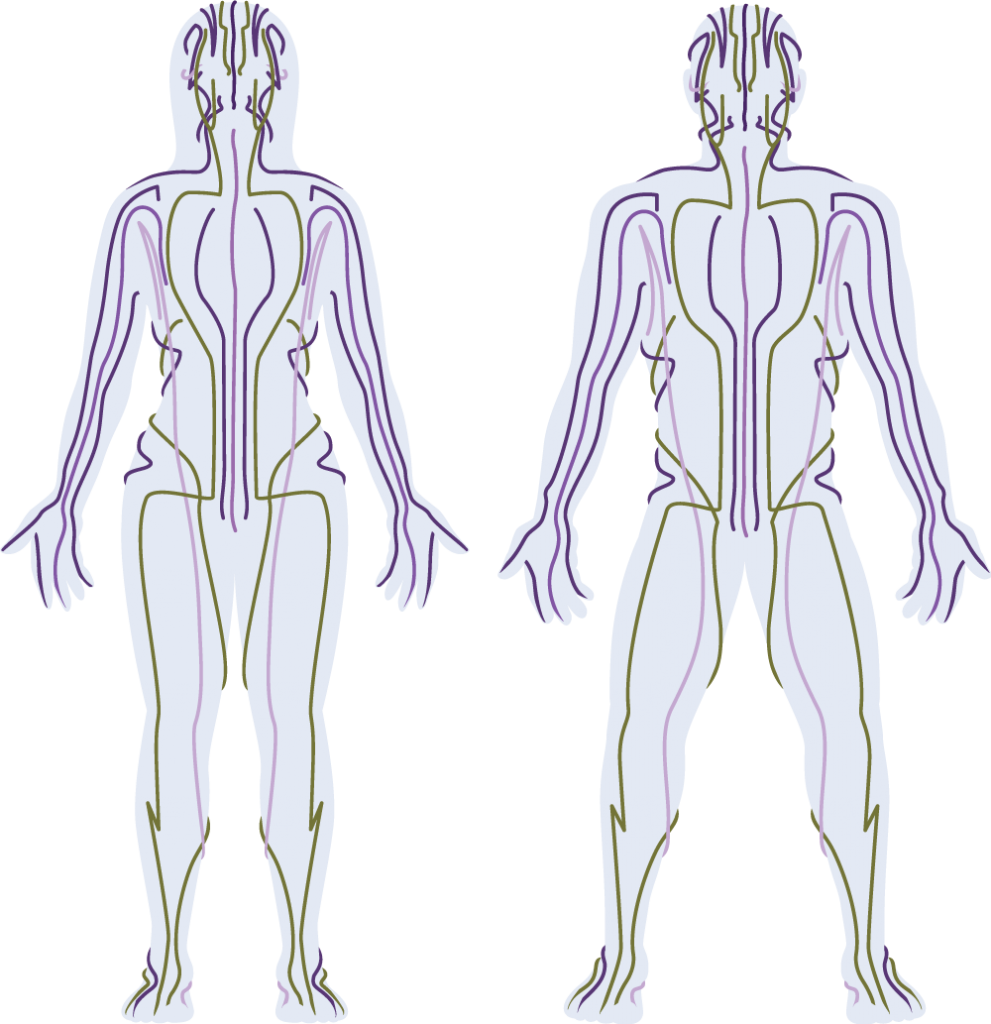
Chapter 2: The History of Chinese Medicine
How did humans discover the art of acupressure, which can balance our meridian energy and heal our bodies?
Nobody knows exactly how it came about, but we do have some theories…
Where Did Acupressure Come From?
In the absence of modern science, primitive humanity searched far and wide for ways to alleviate their suffering.
Many societies, including ancient China, discovered things like herbal remedies, aromatherapy, and massage, all of which are still in use today.
But how did ancient humans identify the invisible energy flowing throughout our body, and discover that it can be manipulated with acupressure and acupuncture?
The answer may lie in modern spiritual circles, where some spiritually adept individuals have reported that they can actually see the acupuncture meridians flowing throughout the body with their own eyes.
This makes sense for those of us that believe the stories of psychically sensitive individuals who can see auras.
If you can see an aura around a human body, why not an energy meridian inside the body?
Nobody knows exactly when ancient humans discovered the energy meridians and developed acupressure, but we do know that ancient China was practicing acupuncture as early as 200 BC, because one of the earliest Chinese healing texts was written around that time.
Acupressure and acupuncture probably existed for a long time before then, but we’ll never know exactly when it first came into practice.
Modern Developments in Acupressure
Despite its ancient origins, acupressure is still being modified and improved by its enthusiasts.
In the next section we’ll take a look at other energetic healing methods, some of which are modern creations similar to acupressure that can heal the body in more advanced and sophisticated ways.
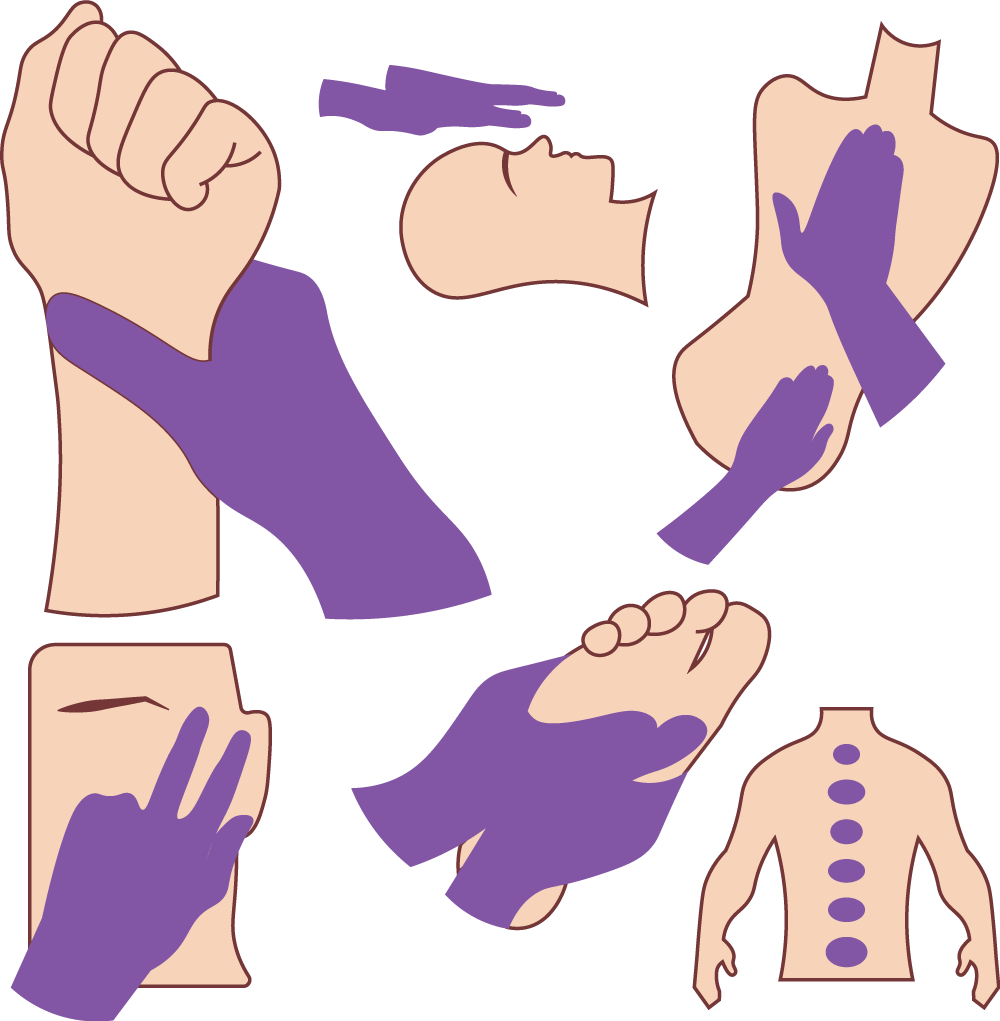
Chapter 3: Acupressure vs Other Healing Techniques
Let’s take a look at how acupressure compares to some popular alternative healing practices:
- Acupuncture
- EFT (Emotional Freedom Techniques)
- Massage
- Reflexology
- Reiki
- Shiatsu
Acupressure vs Acupuncture
Ancient peoples first started manipulating the meridian energy of the body by using fingers to put pressure on specific acupoints.
Later on, they discovered that using objects such as needles could be even more effective at stimulating the meridian acupoints.
Thus, the development of acu “puncture” – the practice of using needles to “puncture” the acupoints.
Today, acupressure is a more casual technique that is often used at home by amateurs, whereas acupuncture requires hundreds of hours of training and has strict license requirements to practice on others.
That’s because governments don’t want something going wrong when you poke other people with needles.
Both healing techniques can balance your Chi, but most experts consider acupuncture needles to be more powerful than finger pressure at stimulating the meridians.
Acupressure vs EFT (Emotional Freedom Techniques)
Emotional Freedom Techniques is a modernized version of acupressure that combines finger “tapping” on acupressure points with psychological exploration processes in order to maximize emotional healing, which often results in physical healing as well.
That’s because subconscious negative emotions are often the underlying cause of physical problems in the body, as the founder of EFT discovered and now teaches.
Acupressure often prescribes a certain set of acupoints to use for specific physical problems in the body, whereas EFT uses a “one-size-fits-all” acupoint tapping routine plus some psychological examination tools that help you uncover the negative emotions that are causing your health problems.
The founder of EFT now calls the tapping routine “Gold Standard EFT” after introducing the world to an even more powerful psychological healing method that he proclaimed as Optimal EFT, which doesn’t use acupoint stimulation at all.
Acupressure vs Massage
Both acupressure and massage use finger pressure to stimulate various parts of the body, but they aren’t really the same technique at all.
Acupressure is focused on stimulating specific acupoints around the body, whereas massage is focused on stimulating the physical muscles themselves.
The goal of acupressure is spiritual or “energetic” in nature, whereas the goal of massage is a purely physical phenomenon.
A regular muscle massage is bound to accidentally stimulate a few acupoints here and there, but only by accident, not by design.
Acupressure vs Reflexology
Reflexology is the stimulation of certain locations around the body, usually on the hands and feet, to promote healing via balancing the body’s energy system.
Sounds like acupressure, right?
Not exactly.
Reflexology doesn’t use the same acupoints and meridians that have been documented for thousands of years in traditional Chinese medicine.
Instead, it uses “zones” that reflexologists claim are directly connected to the rest of the body via some unexplained mechanism.
Some reflexologists say this connection is via the meridians, but there is no widespread agreement on this claim.
Overall, reflexology theory is poorly defined compared to acupressure.
Acupressure vs Reiki
Reiki was invented in the early 1900’s by a Buddhist monk, and thus does not have the thousands of years of history held by traditional Chinese medicine.
To practice Reiki, simply place your hands on or near a person whom you intend to heal, and use your mental intention to channel healing energy into their body.
This positive energy revitalizes the patient’s life force and can bring about physical improvement.
Although both practices involve the manipulation of Chi, acupressure is a stricter discipline because it requires knowledge of specific acupoints whereas Reiki does not.
The primary effort in Reiki is the mental intention of healing, whereas acupressure focuses on physical stimulation of the acupoints.
Acupressure vs Shiatsu
Shiatsu originated in Japan in the early 1900’s as a regular acupressure massage technique, but quickly became something more as its practitioners split in agreement over the direction of the art.
One direction was more “scientific” and focused on stimulation of just the physical muscles of the body like a regular massage, while the other direction was called Zen Shiatsu and focused on the spiritual and mental aspects including the healing power of intention and meridian energy.
Today, Shiatsu is really “what you make of it” because so many people disagree on exactly how to practice it.
One of Shiatsu’s earliest practitioners, Shizuto Masunaga, even came up with his own meridian lines that are different than the ones taught in acupuncture schools today, but this new meridian system only has marginal support in energy healing circles today.
Because Shiatsu has no standardized text that details how it should be performed, its practitioners have taken great liberty in creating their own spin-off versions of it.
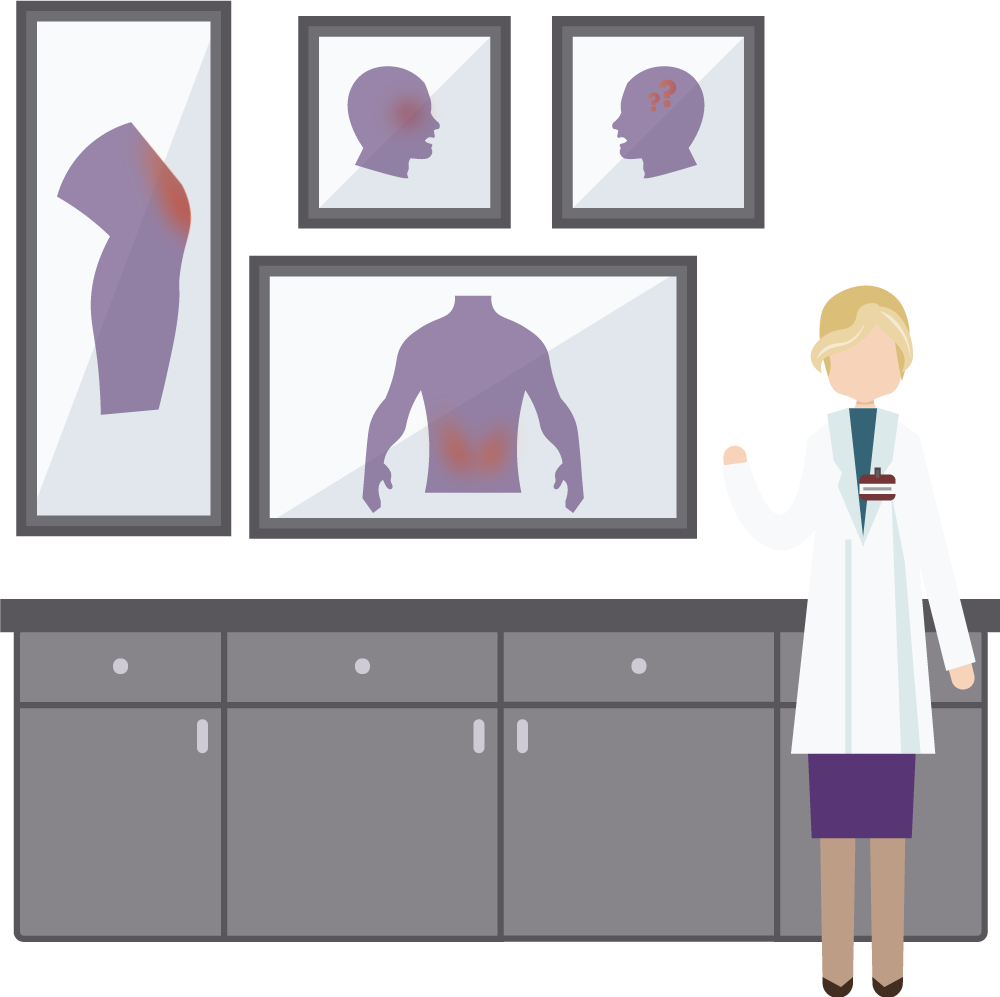
Chapter 4: Scientific Evidence for Acupressure
Many people dismiss energy healing as merely placebo effect, but what does the actual science say about it?
Let’s take a look at some studies performed on acupressure and see what results have been produced.
The Science of Energy Medicine
In the debate over energy medicine, you have two groups.
First, you have the hardcore group of “I have to see it to believe it” scientists who say that unless they can observe something in a laboratory, then it must be a fairy tale or placebo effect at best.
But secondly, you have millions of people around the world that have used acupressure or other energy healing methods and profess their positive results.
I’ve already compiled a separate page concerning the scientific evidence for & against acupuncture.
Since acupuncture theory is the same as acupressure theory, but each method simply uses different tools for meridian stimulation, you could assume that the results may carry over from one practice to another.
However, since some skeptics will demand scientific evidence of acupressure in particular, let’s take a look at some of the 1,000+ research articles that have been produced specifically concerning acupressure.
Scientific Studies That Support Acupressure
Acupressure for chronic back pain: A study of patients who underwent normal therapy, followed by acupressure treatment, found that acupressure helped decrease back pain and increase patient mobility in addition to the benefits of regular therapy.
Another study also found that acupressure achieved back pain relief.
Acupressure for nausea: A study of migraine sufferers found that acupressure helped relieve their nausea that was associated with migraine attacks.
A meta analysis of studies concerning acupressure also found that it is likely an effective tool for reducing nausea and vomiting after surgery, and reducing the need for anti-nausea drugs during the surgery recovery period.
Another study also found that acupressure is effective at reducing nausea and vomiting after surgery.
Acupressure for menstrual cramps: A study found that acupressure is effective at relieving pain caused by menstrual cramps.
Acupressure for PTSD: A meta analysis of studies concerning EFT (Emotional Freedom Techniques), which is a modern offshoot of acupressure, found that the acupoint stimulation portion of the EFT process played an active role in helping reduce the symptoms of PTSD.
Acupressure for post-surgery pain relief: A study found that acupressure helped reduce pain after cesarean section surgery. It also found that acupressure is effective at relieving nausea and vomiting caused by opioid addiction.
Acupressure for dementia: A study found that acupressure was effective at reducing agitation in patients who suffered from dementia.
Acupressure for post-pregnancy recovery: A study found that women who received acupressure after giving birth recovered more quickly than women who did not receive acupressure.
Acupressure for sports injury recovery: A study found that acupressure was effective at reducing pain experienced by athletes who had suffered from sports-related injuries.
Acupressure for menopause: A study found that wearing acupressure bracelets on the proper acupoints helped reduce some symptoms of menopause.
Acupressure for sprained ankle: A study of injured patients found that acupressure was effective at improving the recovery from a sprained ankle.
Scientific Studies That Deny Acupressure
In the interest of being fair, I’ve listed a few findings that go against acupressure. I came across these studies during my examination of studies concerning acupressure. I did not cherry pick more “winners” than “losers” while examining these studies:
A meta analysis of studies found that acupressure is not effective at enhancing sleep quality.
A study of migraine sufferers found that acupressure is effective at reducing nausea caused by migraines, but is not effective at reducing pain caused by migraines.
A study of acupressure for injured athletes found that it helped reduce pain, but not anxiety.
A study of acupressure for menopause found that it helped reduce some symptoms, but not all symptoms.
In Conclusion…
There have been many studies concerning the efficacy of acupuncture as a healing treatment, with some producing positive results and others producing no measurable results one way or the other.
But acupressure has been examined much less by the scientific community, and the science is less conclusive on it than acupuncture.
There appears to be some decent evidence that acupressure is effective at treating nausea and pain, but most other health issues require further study to produce definitive results.
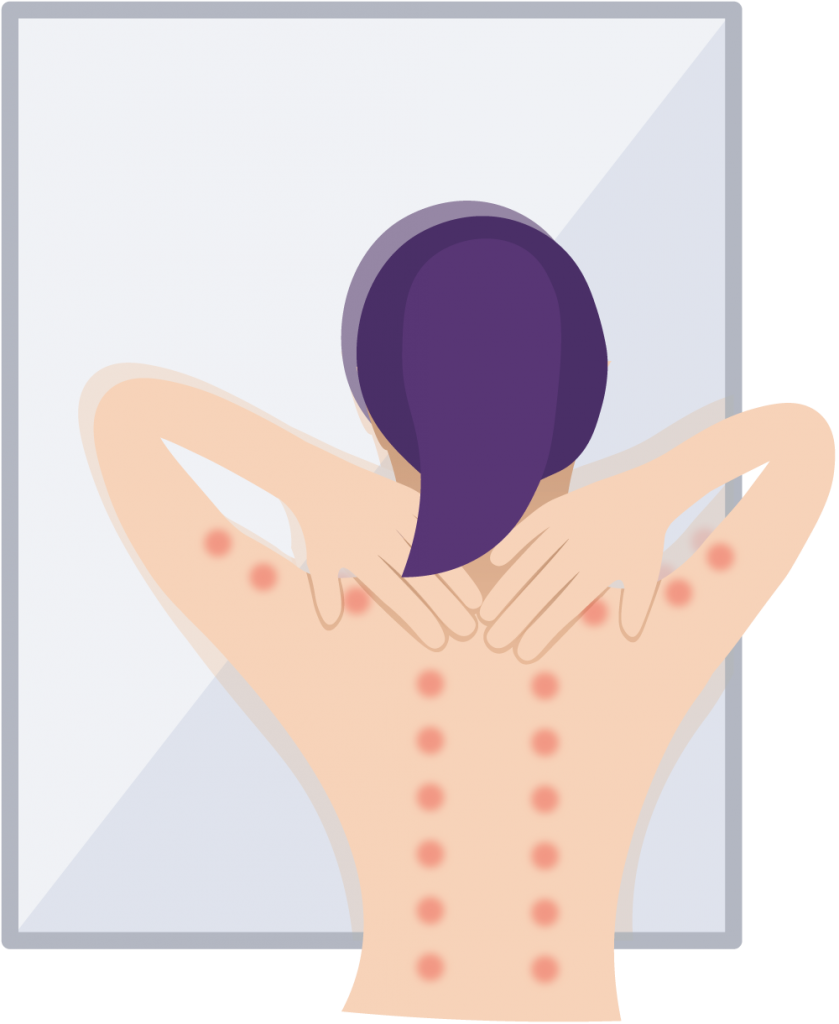
Chapter 5: How to Perform Acupressure
Step 1: Identify your health problem.
Step 2: Find the rights points.
Step 3: Start poking them!
Let’s Learn Acupressure
The two fundamental steps to acupressure are choosing the right acupoints to use, and stimulating those points with physical pressure.
When it comes to stimulation techniques, there are several variables such as the amount of pressure that you put on a point, whether your fingers are static or using a rubbing motion, and whether you prefer using your hands or a tool such as the ones discussed in Chapter 9.
You can also vary the length of time that you apply pressure to each point, with some books recommending anywhere from one minute to ten minutes of pressure per acupoint.
The pressure you apply should not be strong enough to cause actual pain, although deep pressure may cause temporary muscle soreness.
You should only use gentle pressure on an acupoint if you have an injury in that location, such as a cut or bruise.
Choosing Your Method
Preferences for all of the above options differ among practitioners, but since acupressure is easy to learn, free to use, and quick to apply, you can try them all out yourself and see which methods you prefer.
I recommended starting out by following a video guide to get some practice with the basics.
I’ve gathered a few videos here so that you can follow along as you learn.
Video 1: Acupressure for Stress Relief
Video 2: Acupressure for Back Pain Relief
These videos are just a taste of the free educational material that is available online.
I encourage you to look up free acupressure training videos on Youtube or elsewhere for the specific health condition or mental problem that you are trying to relieve.
There are also further training options that we will discuss in Chapter 7.
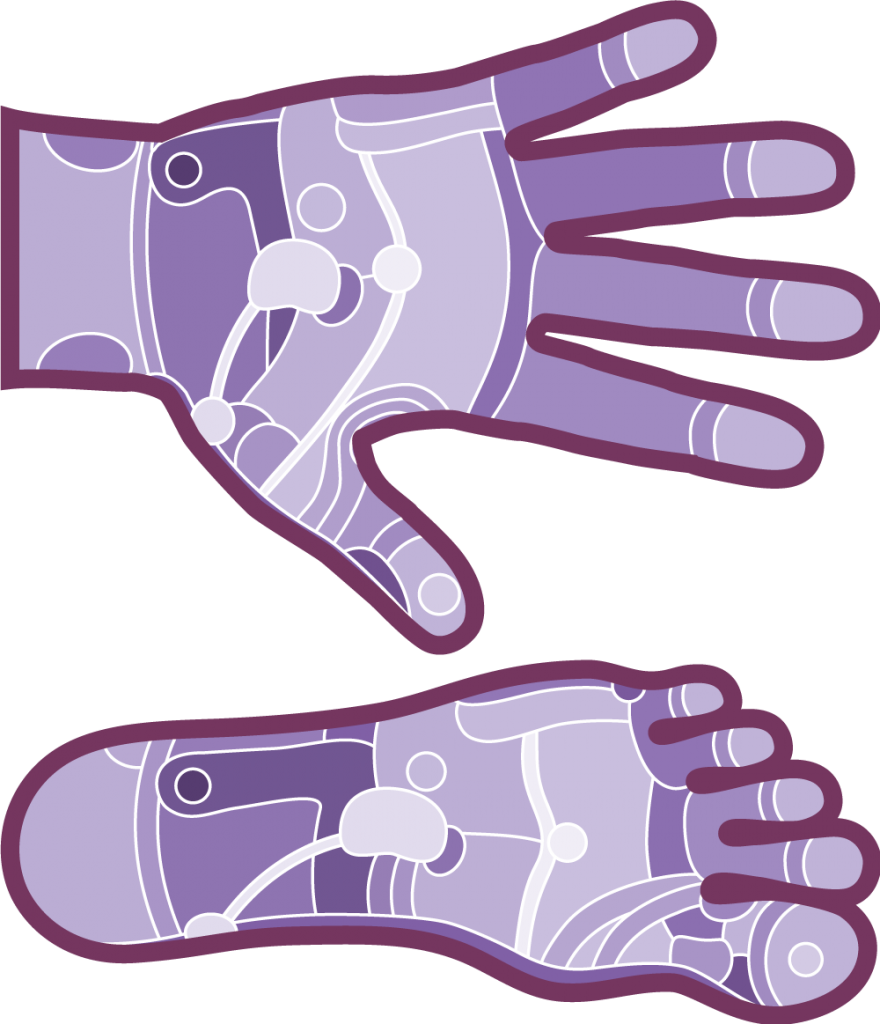
Chapter 6: Acupressure Points for Specific Ailments
How do we choose the right acupoints for our specific health problem?
The easiest way is to follow a guide, such as the one below.
Acupressure Points You Can Use Right Now
The acupoints in this guide were chosen based off the recommendations made in the best selling book Acupressure’s Potent Points by Michael Gach.
Let’s take a look:
- Allergies
- Anxiety
- Back Pain
- Brain Stimulation
- Constipation
- Congestion
- Cramps & Spasms
- Depression
- Diarrhea
- Ear Pain
- Eye Problems
- Feet (Foot & Ankle Pain)
- Gas & Bloating
- Headaches
- Knee Pain
- Labor, Delivery, & Nursing
- Menstrual Problems
- Nausea
- Neck Pain
- Runny Nose
- Sinus Problems
- Stomach Pain
Didn’t Find Your Problem Here?
This list contains several widespread health problems, like back pain and nausea, which many people use acupressure to treat.
But there are many more health issues that acupressure can treat.
I can’t make a personal guide for all of them, but I’ve assembled a list of training resources in the next chapter that will give you the information you need to treat yourself almost any condition imaginable.
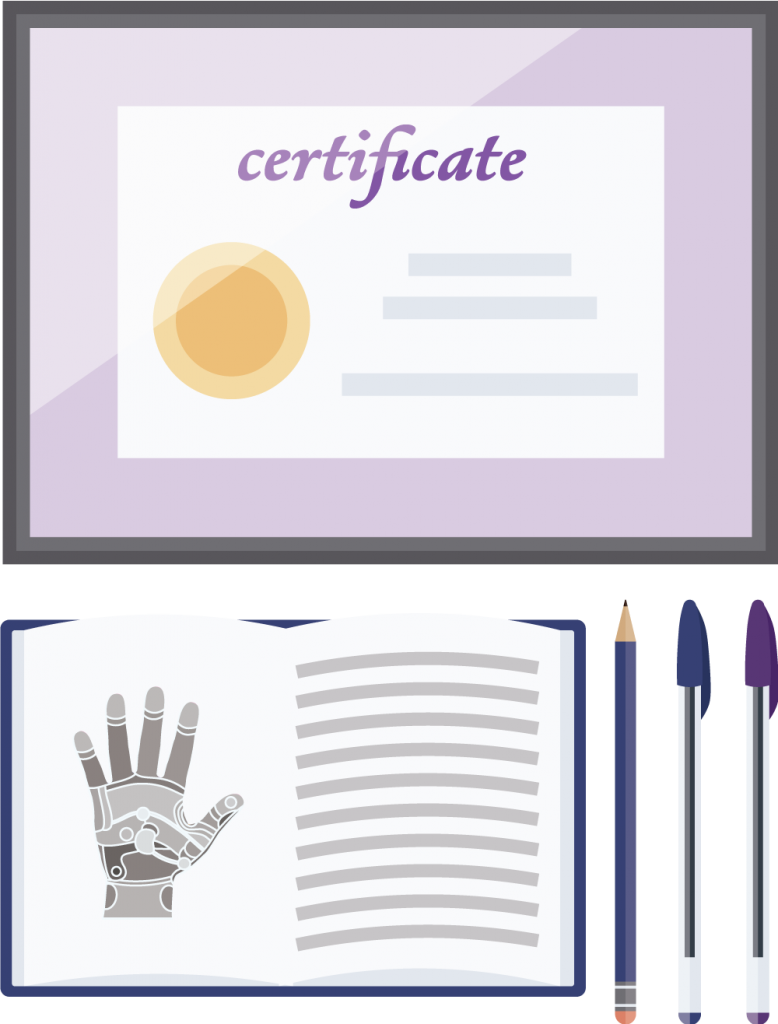
Chapter 7: Acupressure Training Opportunities
In this section, we’ll take a look at the different options for improving your acupressure skills:
- Instructional Books
- Online Video Training Courses
- Private Certification
- Professional Licensure
Instructional Acupressure Books
The first acupressure book on our list is Acupressure’s Potent Points, one of the best selling acupressure books in the English language.
It provides about 40 different combinations of acupressure points designed to treat different health problems, ranging from muscle pain to motion sickness to infertility and more, and it comes with picture guides on exactly how to position your hands to properly put pressure on each acupoint.
The next book on our list is Acupressure for Emotional Healing.
This book goes into much further detail concerning emotional issues, featuring more than 20 different acupoint combinations for various emotional problems that you may experience.
It gives specific acupoint selections as well as pictorial guides of the various acupoints to press for treating emotions like anger, abandonment, depression, numbness, jealousy, trauma recovery, and more.
The final book in my trio of recommendations is the Acupressure Atlas.
This book is a complete guide to acupressure all by itself, featuring a guide to the acupuncture meridians in the beginning of the book, followed by instructions on how to practice acupressure.
The rest of the book contains a huge picture guide on how to find tons of different acupressure points on the body from every meridian, followed by a guide that contains more than a dozen specific acupoint combinations for treating various health problems.
Online Video Acupressure Training Courses
A great place to find video training courses for acupressure is Udemy.com, which has dozens of different video courses that are home made by various acupressure users.
Some courses are taught by casual enthusiasts, whilst others are taught by trained professionals.
Udemy’s top selling acupressure-related course, Acupressure and Meridian Massage Techniques, is a beginner level course taught by a professional acupuncturist specifically for physical therapists to learn how to incorporate acupressure points into their treatment of clients.
There are also courses like Acupressure for Emotional Wellbeing and Acupressure for Pain Relief.
Udemy courses are made by individual users, so I can’t guarantee the quality of each individual course, but you can read user reviews and see which one sounds like the best fit for your interests.
Private Acupressure Certification
A certification is something that any organization can give you, whereas a license is a permission slip from the government saying that you are allowed to practice in their jurisdiction.
A certification won’t allow you to practice acupressure in a state or country that restricts the practice of such a therapy to only licensed professionals, but it will allow you to advertise to clients that you have been trained by whichever private organization provided the certificate.
There may be some certifications offered by the providers of online training courses such as the ones linked to in the above section, or such as those from acupressure.com’s training page.
There are also some private organizations that offer in-person training in traditional Chinese medicine, such as NCCAOM.org, but it’s unclear if they offer specific courses in acupressure alone.
I can’t possibly provide you with the exact details of an in-person certification program in your specific area, so you’ll have to search your local listings to see if such an option is available nearby.
Before you pursue certification from a private party, you should learn the licensure requirements for practicing acupressure in your local area.
Professional Acupressure Licensure
While most governments regulate the practice of acupuncture because it involves needles which could potentially harm patients, most also don’t specifically regulate acupressure.
That’s because governments that rely on “hard science only” consider acupressure to be no different than a regular massage.
In order to sell your acupressure services, some jurisdictions may require you to get a license to practice some other form of “hands on” healthcare service.
License types that would allow you to practice acupressure include chiropractic, physical therapy, and massage therapy, but some jurisdictions don’t require any license at all in order to practice energy medicine as long as you label it as such and don’t claim to be practicing a formal type of healthcare.
In areas that do require licensure, a professional massage therapy license will usually be the quickest and cheapest license to acquire that would allow you to perform acupressure on patients for payment.
If you want to sell acupressure treatments, you’ll have to look up the specific license requirements in your area.
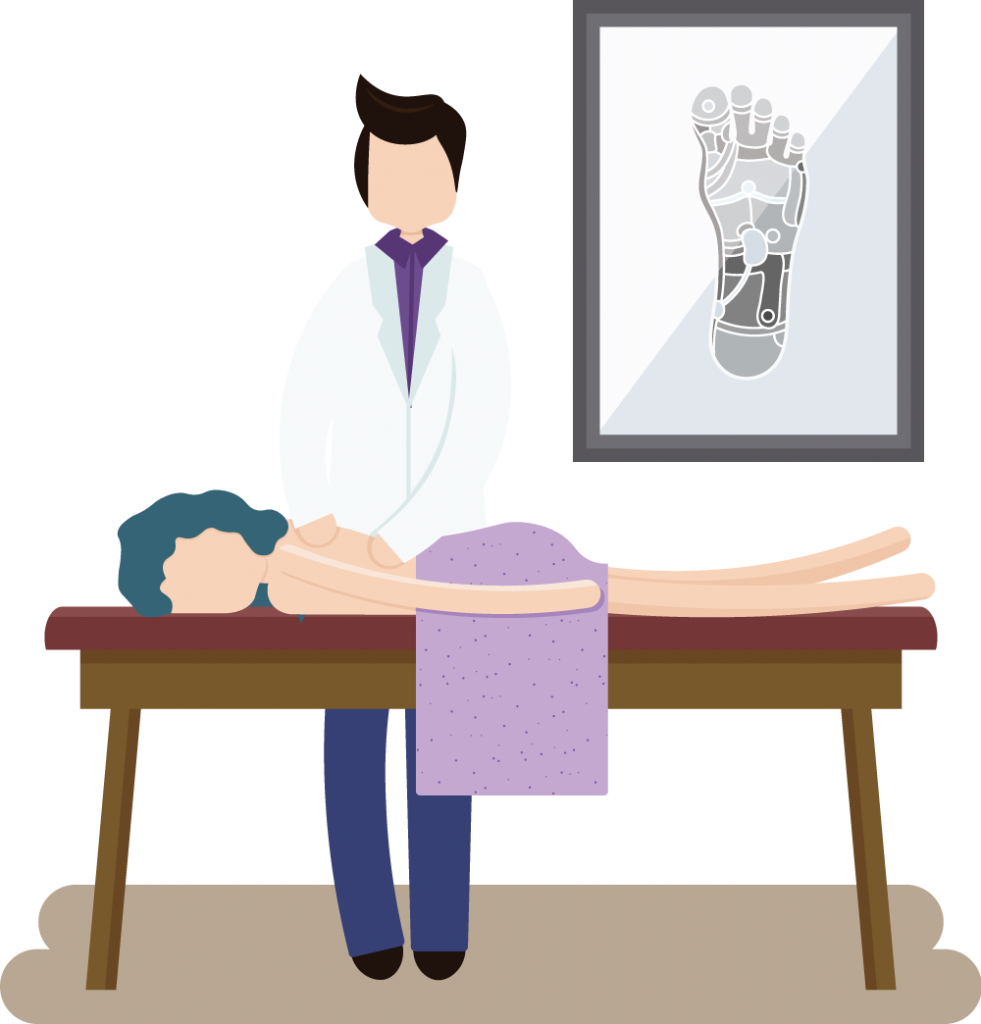
Chapter 8: Getting Professional Treatment
A professional energy healer can bring their years of experience to treat your health problem, often providing relief where science and drugs fail to perform.
Need Professional Help?
Most governments don’t recognize acupressure massage as a different treatment than regular massage, so you won’t be able to find a list of government-approved acupressure practitioners in your local area.
Instead, you’ll have to judge acupressure practitioners by their own credentials, which may include experience as a regular massage therapist or some other form of body treatment.
One option is to search for a traditional Chinese medicine provider through NCCAOM.org’s search section.
But the best way to find an acupressure practitioner is to search for licensed acupuncturists in your area, and ask them individually if they provide acupressure massage, or if they can recommend someone who does.
Consider Your Options
If you’re going to receive energy healing from a professional, consider expanding your horizons and getting an acupuncture treatment instead of just acupressure.
A licensed acupuncturist typically has hundreds of hours of professional schooling, and will be able to pinpoint the best acupoints to relieve your specific health problem, whereas an acupressure practitioner may have much less experience since there is no formal license requirement to practice acupressure.
If traditional scientific medicine has failed to cure your health problems, I encourage you to consider all of the energy healing options available in your area.
You may be surprised at what finally works and cures your problem for good!
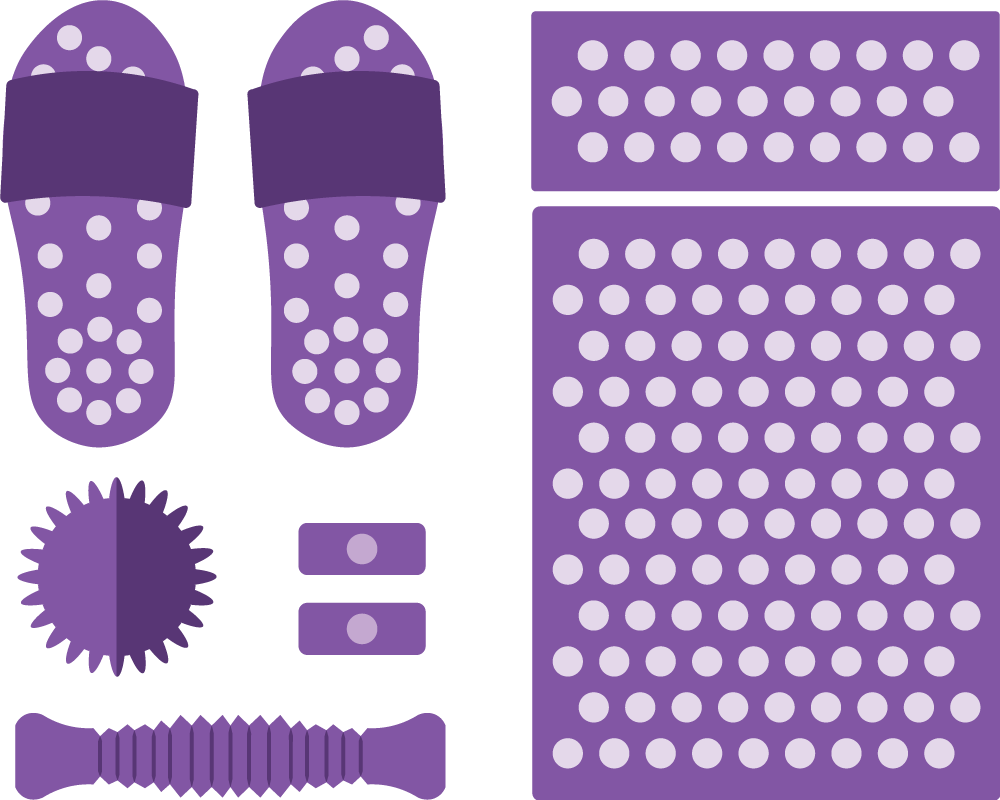
Chapter 9: Acupressure Products & Tools
There are many popular items you can use at home to maximize the effectiveness of your acupressure sessions.
Products You Can Use Today
Acupressure Wrist Bands
The most popular acupressure tool out there is the acupressure wrist band.
You can read about some of them on our acupressure wrist band reviews page.
These bracelets wrap tightly around your wrist or arm and contain a hard plastic object that puts pressure into a specific acupoint.
The makers of these items usually claim that they help reduce sea sickness and nausea in particular, although they may help with other issues as well.
As we learned in Chapter 4, there is a fair amount of scientific evidence that acupressure is effective at reducing nausea, but I haven’t seen any studies that evaluated wrist bands in particular.
Acupressure Yoga Mats
The next popular acupressure item is an acupressure yoga mat and pillow combination.
You can read my in-depth reviews of the best acupressure mats on my acupressure mat reviews page.
Acupressure mats are used to stimulate dozens of different acupoints around your body all at the same time.
The ProSource mat is the best value, but other options come with extra items like a roller ball for deep tissue massage, a strap-on pad for targeted acupressure on the lower back, or a carrying case.
Acupressure Roller Balls
If you just want a roller ball for deep tissue stimulation, you can check out the options for massage roller balls.
These balls are designed for regular massage use, but you could also use them to stimulate acupoints in particular.
Acupressure Slippers
Getting a little more interesting on our list is acupressure slippers.
You can read our review of the best acupressure slippers on the market.
These slippers poke at the bottom of your feet with hard objects in order to stimulate the acupoints of the feet.
They sound painful to walk on, but this is certainly the best way to stimulate multiple acupoints on your feet all at once, almost like a deep tissue foot massage.
Acupressure Shoe Soles
If you’d prefer to use your own shoes while still stimulating the acupoints on your feet, you can get some acupressure shoe soles and put them into your regular work shoes.
These have the added benefit that nobody will ask “what are those weird slippers you’re wearing?” while you walk around in your normal shoes.
Acupressure Pens
This item brings us halfway between acupressure and acupuncture.
An acupressure pen is a stimulation tool for poking and prodding at an acupoint, but without actually using a needle to pierce the skin.
There’s even an electronic acupressure pen that stimulates the acupoints with electricity, allowing you to perform “electro acupressure” at home by yourself.
Acupressure Rings
Similar to acupressure wrist bands, these acupressure rings are designed to stimulate the acupoints on your fingers.
If you want to stimulate a particular finger acupoint, be sure to look up which meridian lies on which finger by using our acupuncture meridian guide.
Acupressure Beads
Acupressure beads are generally used by practitioners on a client, but nothing is stopping you from trying them out yourself.
The basic idea is that you place the beads on the points that you want to stimulate, and then leave them there for an extended period of time to continue the stimulation for as long as you want.
Beads are typically used for ear acupressure and held in place by tape, but could also be used elsewhere on the body.
Acupressure Charts
If all you want is a visual guide to the acupressure points of the body, you can get an acupressure chart to hang on your wall.
You can read our list of the best acupressure charts or just look for yourself on Amazon.
